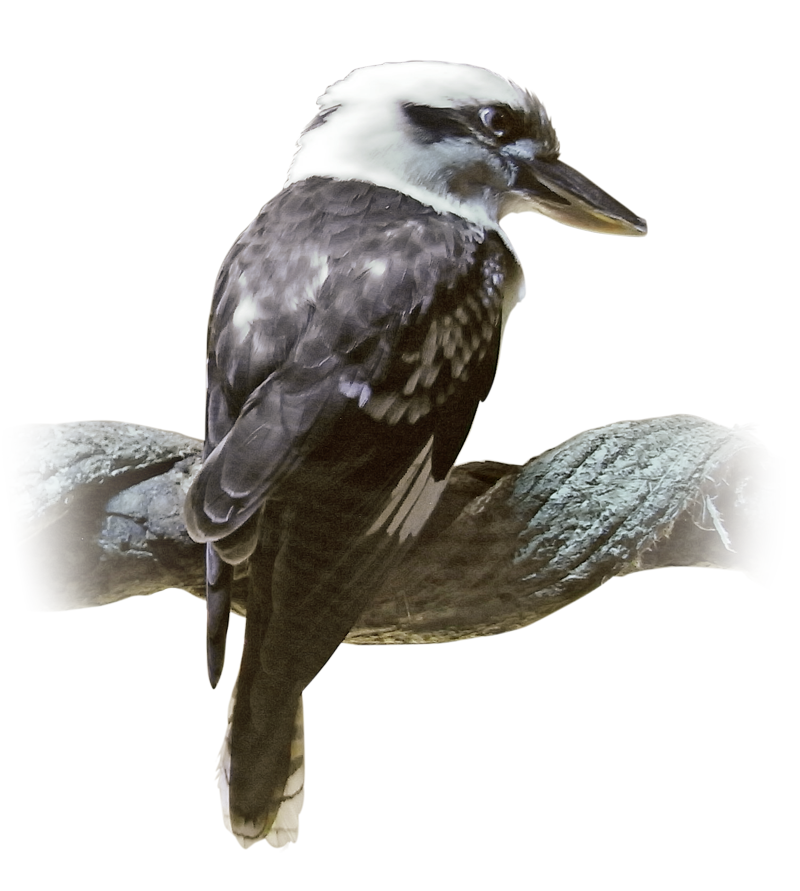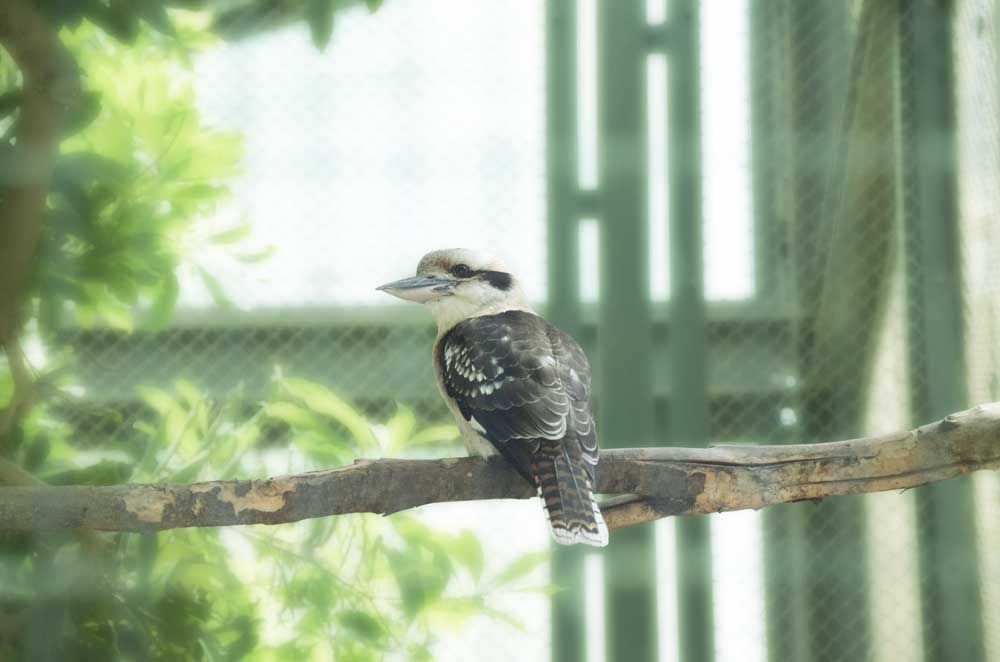
Dacelo novaeguineae (Hermann, 1783)
危険を知らせる笑い声
Laughter that warns of danger
全長40 – 47cm。カワセミ科の中では最大種です。オーストラリア大陸の東部、南西部、タスマニア島に生息します。主に昆虫、ミミズ、甲殻類を食べますが、小さなヘビ、哺乳類、カエル、小鳥も食べることがあります。止まり木から獲物を見定め、一気に飛びかかって仕留めます。
笑うように鳴くのが名前の由来ですが、楽しくて鳴いているのではありません。縄張りを守るために、他の鳥に近づかないように警告を発しているのです。仲間と一緒に「クークークークークーカーカーカー」と合唱します。
オーストラリアを代表する鳥で2000年のシドニーオリンピックでは3つのマスコットキャラクターのひとつとして選ばれました。ちなみに他のキャラクターはカモノハシとハリモグラです。
Reaching 40-47cm in length, it is the largest species in the kingfisher family. It inhabits eastern and southwestern Australia and Tasmania. It primarily eats insects, earthworms, and crustaceans, but will also eat small snakes, mammals, frogs, and small birds. It spots its prey from a perch and pounces to kill it.
Its name comes from the laugh-like sound it makes, but it’s not a laughing sound. It’s a warning to other birds to stay away, protecting its territory. It sings a “koo-koo-koo-koo-ka-ka” chorus with its companions.
This bird is Australia’s signature bird, and was chosen as one of the three mascots for the 2000 Sydney Olympics. The other mascots are the platypus and echidna.

参考文献
Laughing Kookaburra. The Australian Museum. (2023年3月6日) 2034年6月23日閲覧
もっと知りたいオーストラリア | オーストラリアの鳥は人間のように笑う?「ワライカワセミ」 | (2022年4月20日) 2024年6月23日閲覧
IOC オリンピック競技大会 | シドニー2000 | マスコット 2024年6月23日閲覧